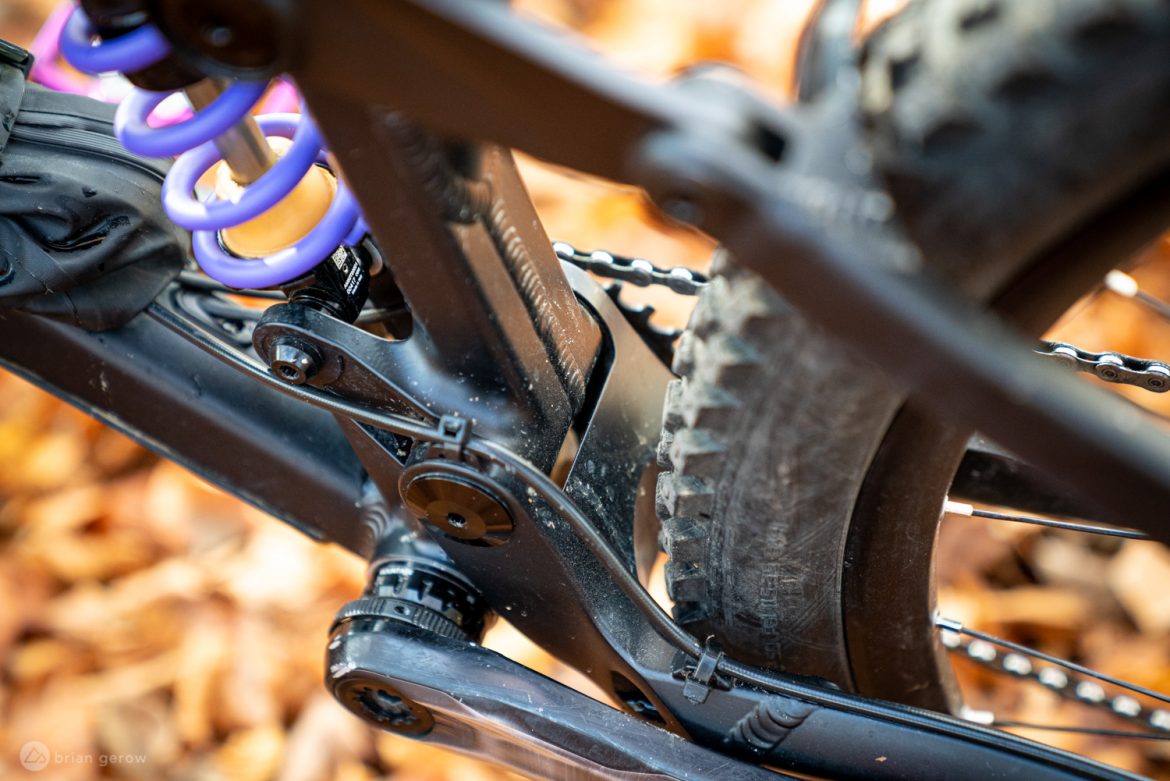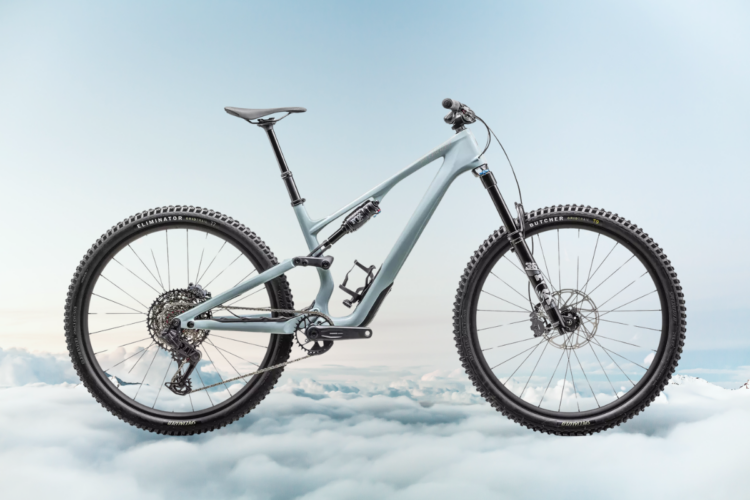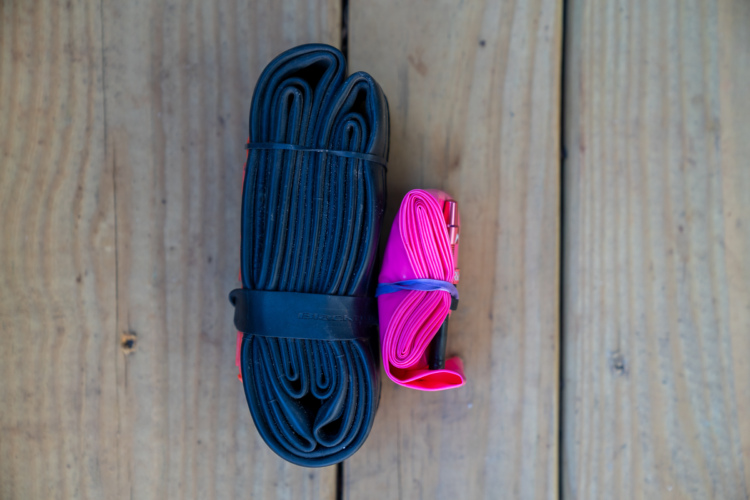
If we look back on our trail bike geometry averages from 2016, 2018, and 2021 we can tell a few things. Between 2016 and 2018, the average wheelbase grew by an inch and the average reach on 29ers grew by more than a half-inch. Between 2018 and 2021, reach grew another 10mm on average and wheelbase and average wheelbases grew by more than a half-inch.
In all, that means that the average reach grew by over an inch between 2016 and 2021 and average wheelbases grew by more than an inch-and-a-half. Bikes as a whole got a lot longer, but interestingly, our averages for chainstay length in 2016 and 2021 stayed about the same with 437mm and 436.7mm for both years, respectively, meaning that most of the lengthening happened up front. This makes sense, considering that brands have typically made their sizing changes in the front triangle.
This summer will mark a good point to measure geometry averages again, but what we can say for sure is that more brands than ever are moving away from a one-size-fits-all rear triangle and into proportional chainstays.
Finding a proper fit

Privateer is a new-ish brand, based in the UK and building burly aluminum bikes for riders who want a trusty steed with minimal fuss. They debuted their first bike, the Privateer 161 in the spring of 2020 with a long reach and wheelbase and proportional chainstays. Privateer’s frame development engineer Dan Hicks analogizes the shift to shoes.
“In my mind it’s a little bit like the grading in shoes,” he said. “We previously only made shoes up to like a size six, so 50% of people were cramming their big feet in tiny shoes.”
When it comes to sizing, it’s not as simple as just increasing the front triangle measurements, according to Hicks.
“If you want the foot to fit the shoe as well as it should for everybody, you have to change more than just one number in the bike.” Privateer’s 161 comes in four sizes with a 6mm increase in chainstay lengths going up the size chart.
For Pivot Cycles, which began moving into proportional chainstays with the release of their Shuttle SL in 2022, the shift was spurred from two areas.
“In general, there was a request for longer chainstays on larger size bikes to have the taller rider more centered in the bike and less over the rear axle,” said CEO Chris Cocalis. When they built up some prototypes, taller riders like the new design.
Media and “key influencers” also drove the conversation forward about proportional chainstays.
“All the press coverage was driving demand at the consumer level,” said Cocalis.
He explained that their chainstays were typically built around the middle sizes — mediums and larges — and then implemented across the size range.
Hicks said that it has worked similarly for the industry at large. Brands also picked the bike in the middle of the size range or the sizes that were most likely to get reviewed, mediums and larges. When an extra small or extra tall rider reads how a bike performed under a 5’10” rider, they are none the wiser because the reviewer had the proper bike. But, it’s time to move on from this philosophy, Hicks says.
“We’re at a date in the industry now where people really do value this performance and the differentiation between things.”
A holistic approach

Occasionally, there might be a survey or conversation point online around building a bike with the perfect geometry. Commenters would say, “I want a 65° head angle, a 77° seat angle, a 1,200mm wheelbase, and 430mm chainstays.” It’s a fun exercise, but it doesn’t quite work that way for engineers. Pushing one angle shifts another.
“It really depends on the bike,” said Cocalis. “Everything is a balance. Obviously, growing the wheelbase due to increases in reach and with slacker head angles brings stability to the bike without having to lengthen the chainstays. Lengthening chainstays adds even more stability but also decreases maneuverability.”
Longer rear centers also increase the effort it takes to lift the front of the bike over obstacles, though if you want a stable bike for steep descents, lengthening both ends helps, “but there is a trade-off.”
Privateer feels confident that adding length to the bike and giving the chainstays the proper treatment too helps the average rider. While the pros don’t always go for the longest bike and the widest bars, the every day mountain biker often benefits from more aggressive geo, though that’s not to say there isn’t a limit.
“Confidence is everything,” said Hicks. “If you’re more confident, you ride quicker, you enjoy it more. If it’s too long and you feel you can’t get around corners, that undermines your confidence. If it’s too short and it feels skittery on tight things, or fast, choppy sections, it undermines your confidence.”
There’s more than one way to lengthen a chainstay

Size-specific chainstays must mean that brands are using two different molds per-size now, correct? Not necessarily. Some brands have been able to keep the molds down to one per rear triangle and change where the bottom bracket is or where the linkage attaches to the front triangle.
Pivot calculates the rider’s center of mass on each size based on the average saddle height and position on the bike, to get an idea of how to then adjust the kinematics and pivot points.
“Developing these kinematics by rider size using different rear center calculations for each size adds some complexity in the design process but we can achieve [having] one rear triangle across the range,” said Cocalis. It’s still a complex process machining the pivots and fixtures in the front triangle because the relationship of the pivots is now different on every size.
“This adds substantial cost and time but it also means that we don’t need to have to have four different rear triangle designs,” he said. Even though there is a big push for proportional stays that doesn’t mean everyone is happy. Cocalis said since they have moved to longer chainstays on some larger sizes, some taller riders are asking for shorter chainstays. It’s not possible with their design since the chainstay length is added at the front triangle.
For Privateer’s chainstays, they are using different size rear triangles on every model. They have to carry more tubing, more tooling, more warranty parts, and conduct safety tests on the bikes in different ways than if they only had one chainstay length.
It also influences the kinematics, complicating the design process. As a rear center gets longer, the leverage rate gets higher for each size. Hicks thinks of these as small percentages though and most people won’t be able to feel a 2-3% difference in the leverage rate from size to size and the change in shock pressure needed to accommodate the change is negligible.
“We’ve just focused on trying to do that change in a way that makes the least difference,” he said. “We think predominantly, geometry is what influences how the bike rides and that balance is really important to us. And the change that you get in the kinematics is insignificant enough that it’s worth it for what you get with the geometry.”







0 Comments